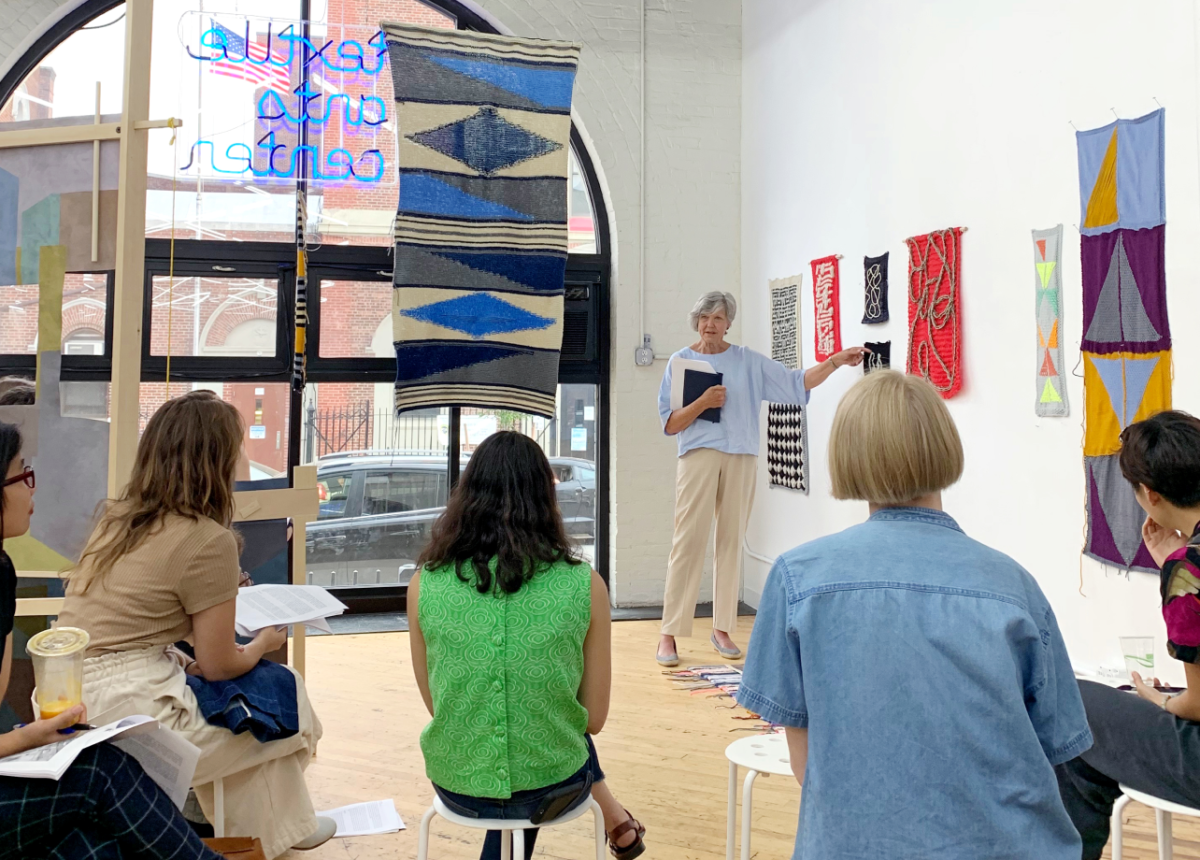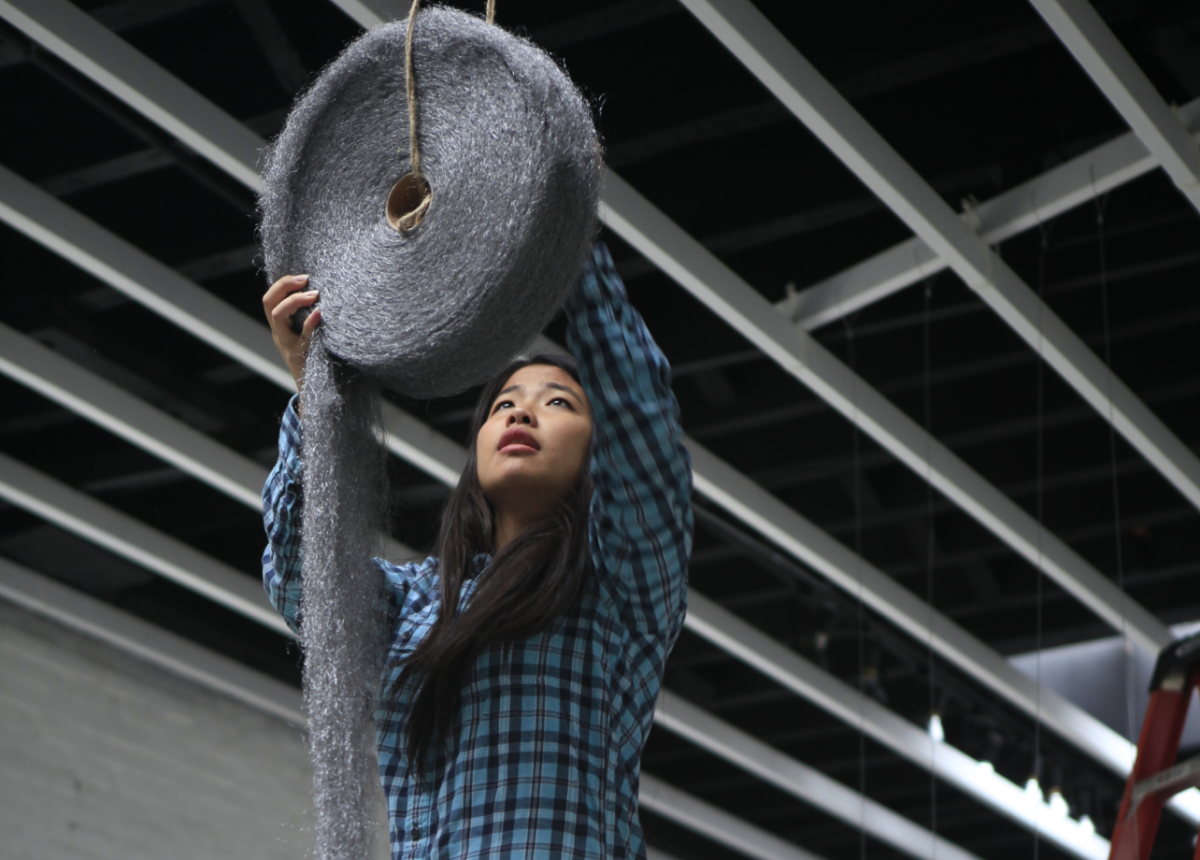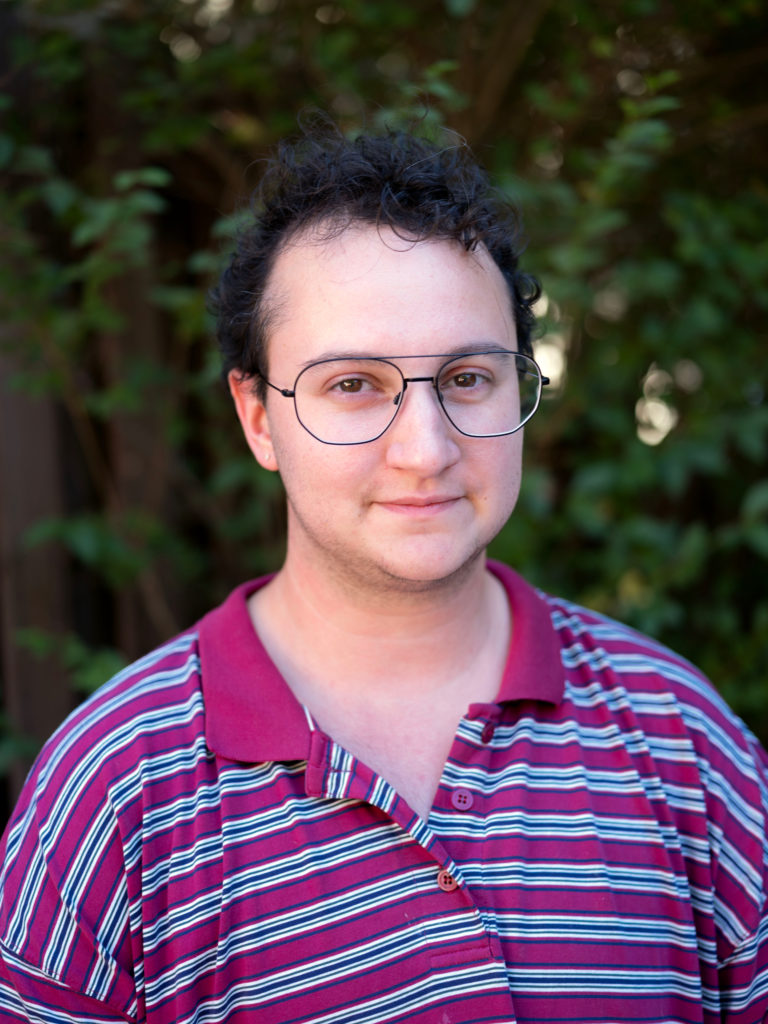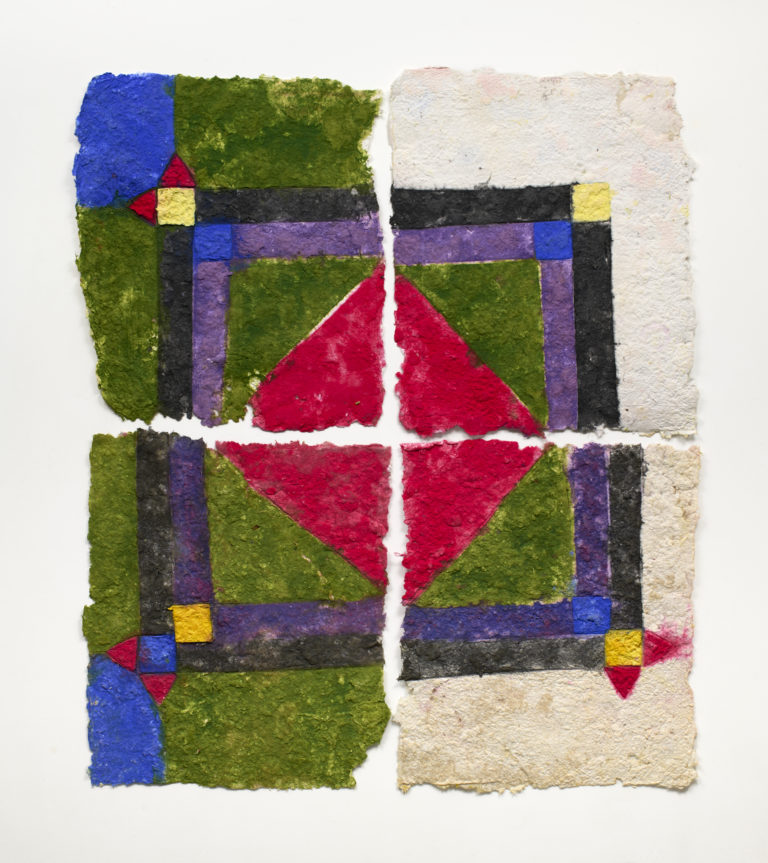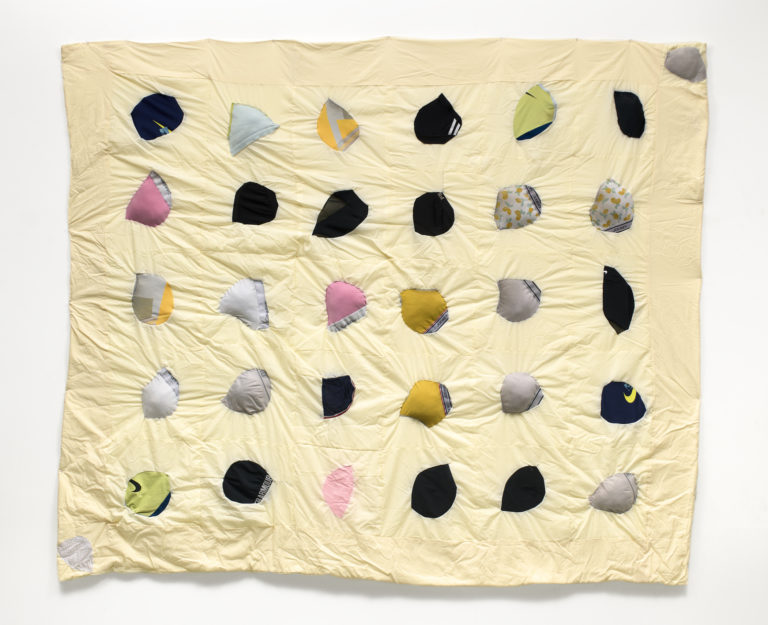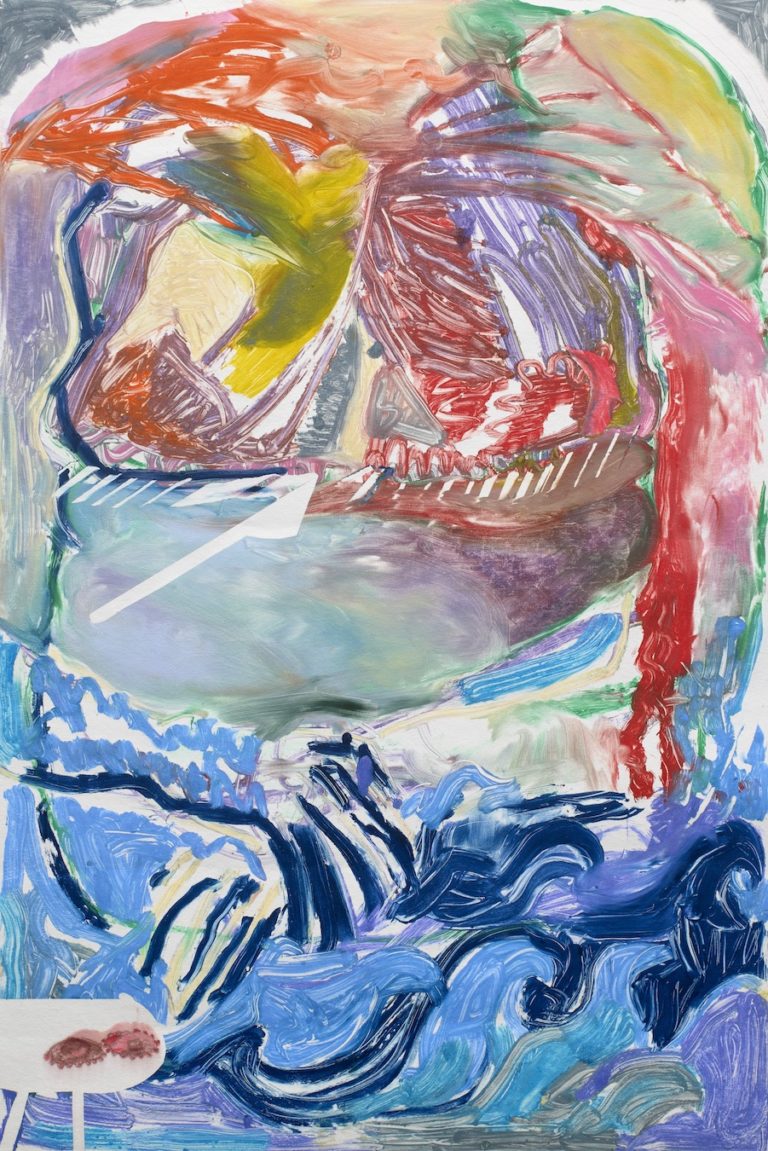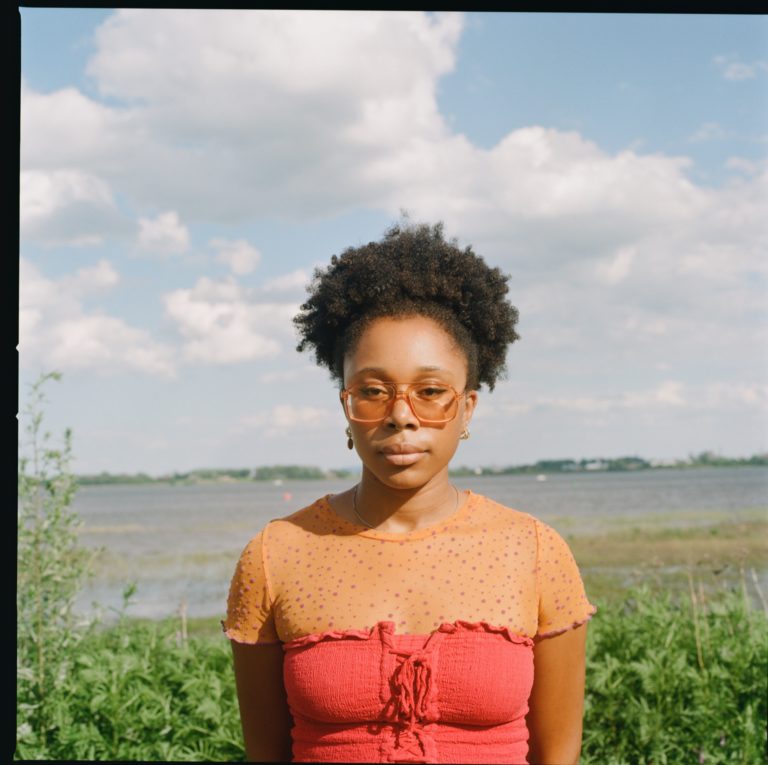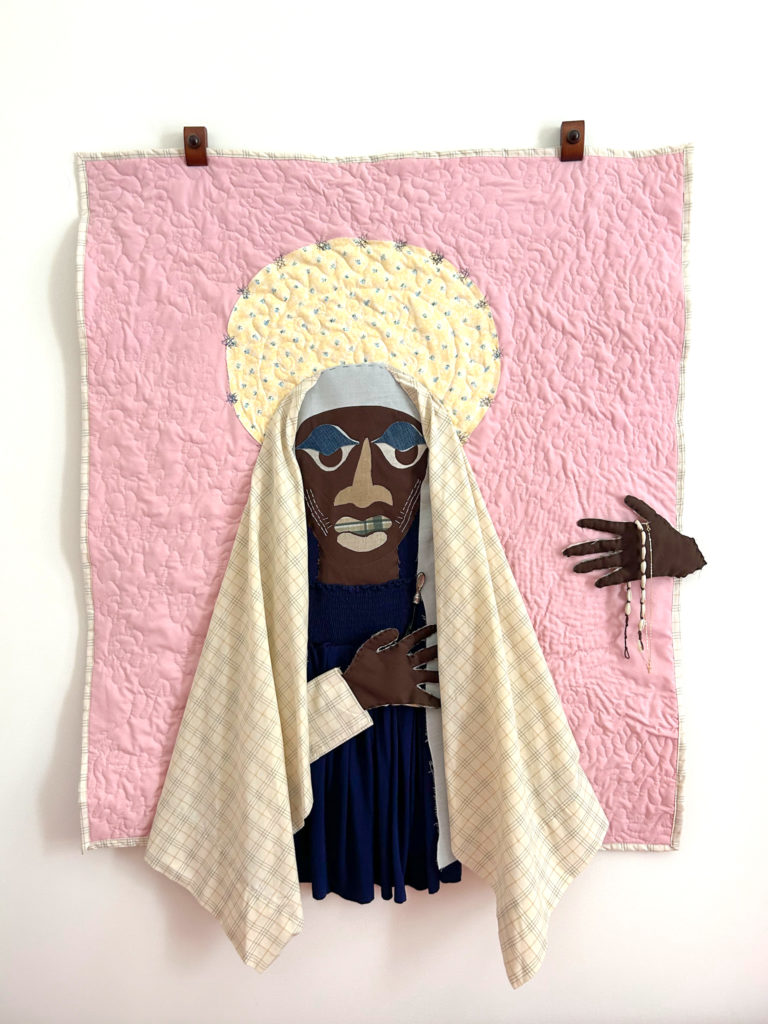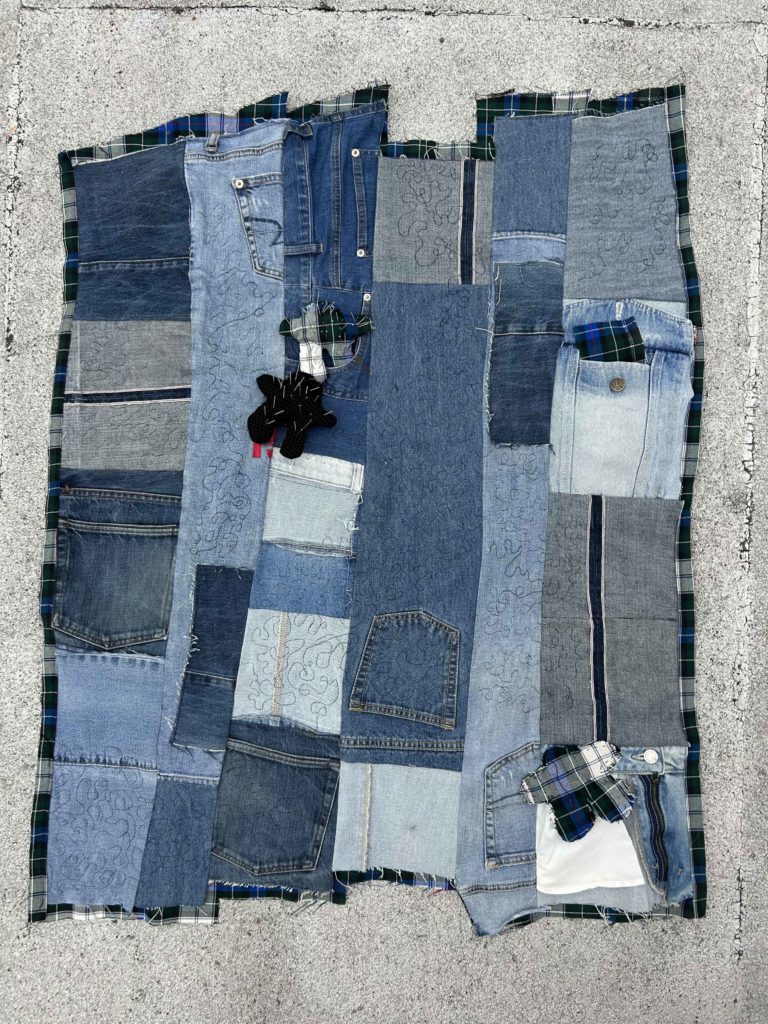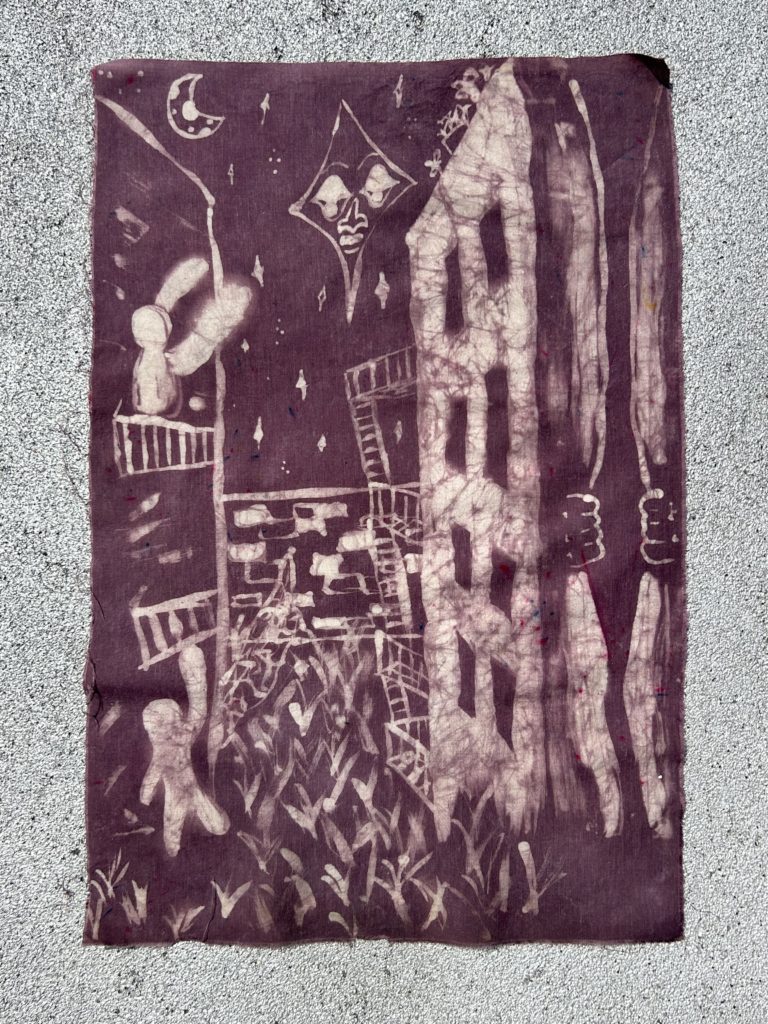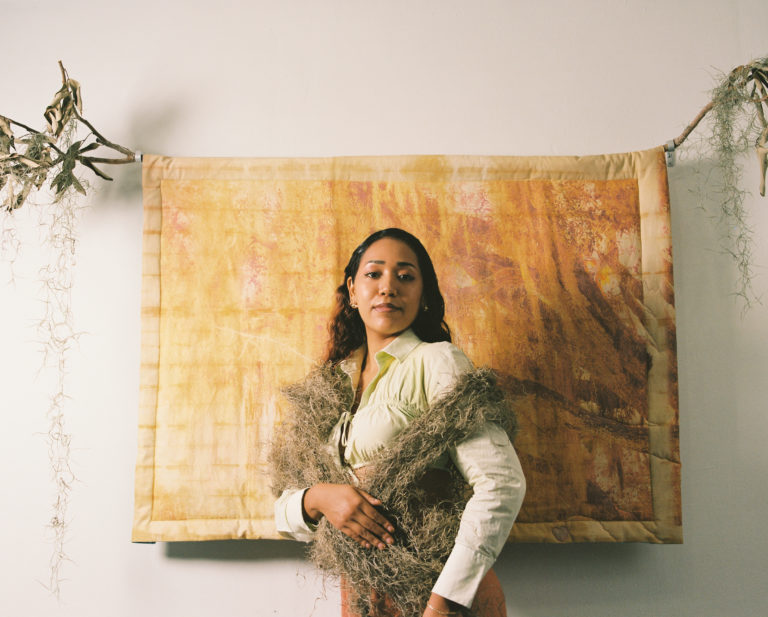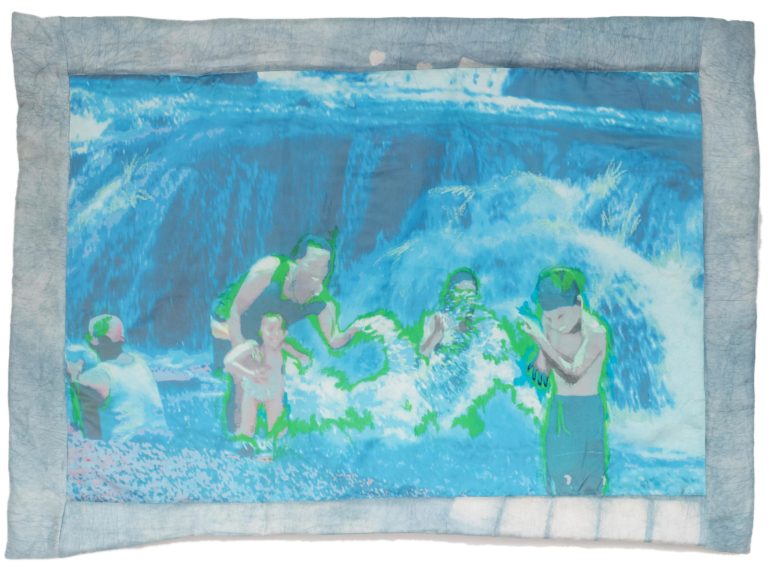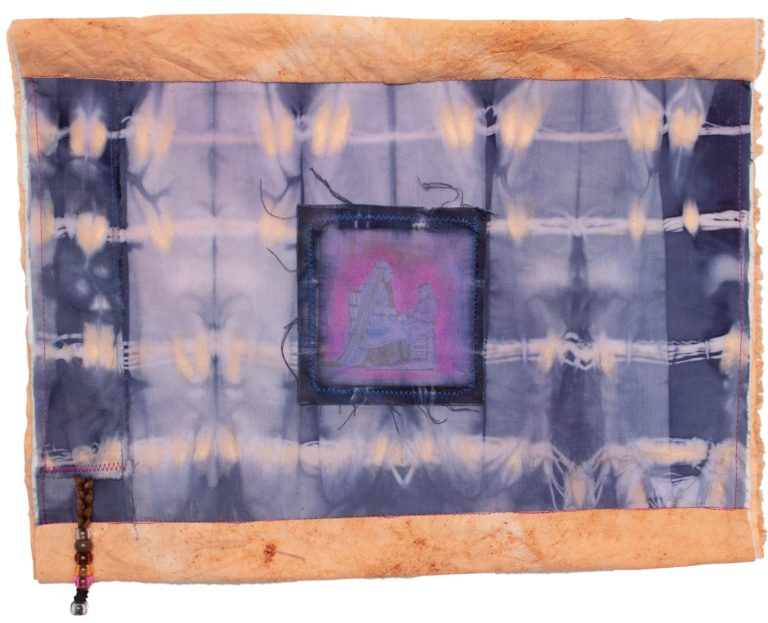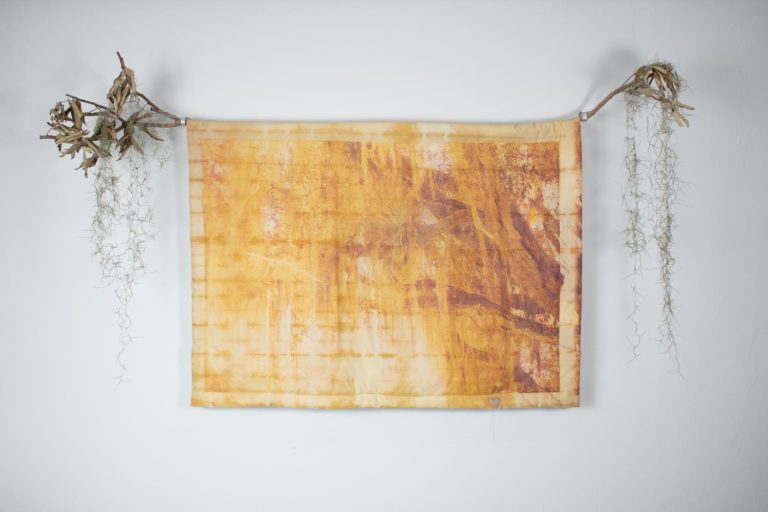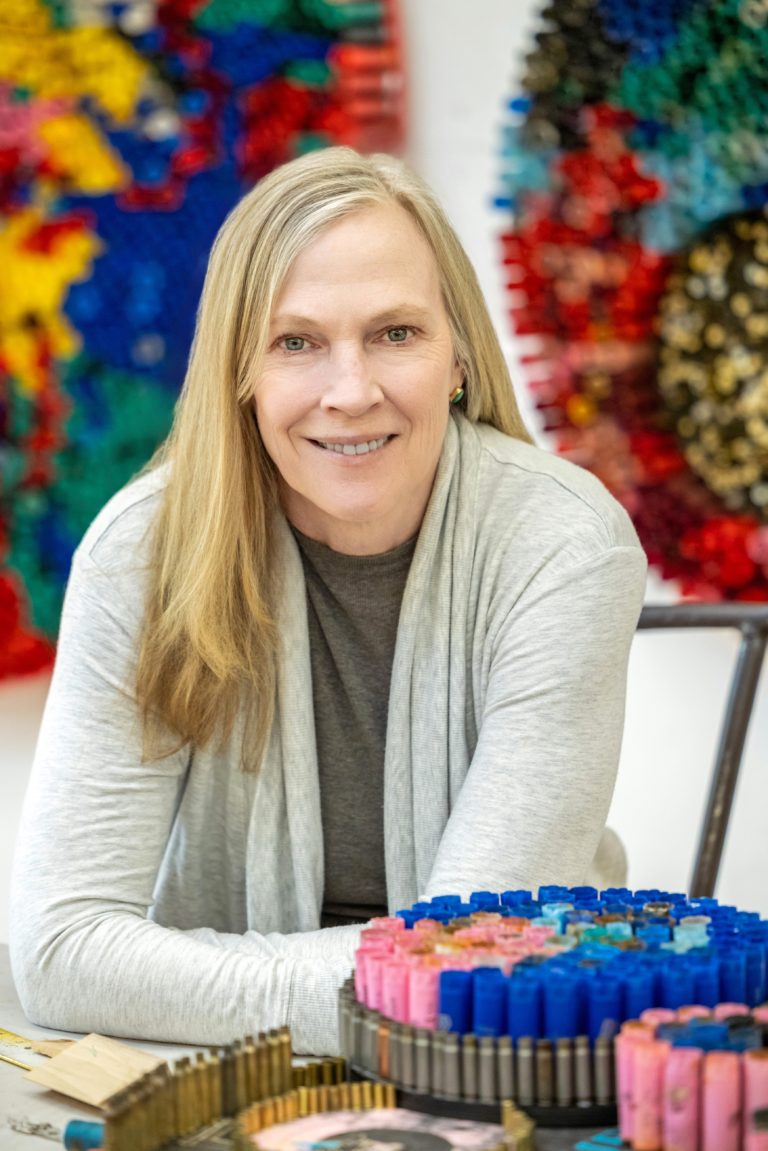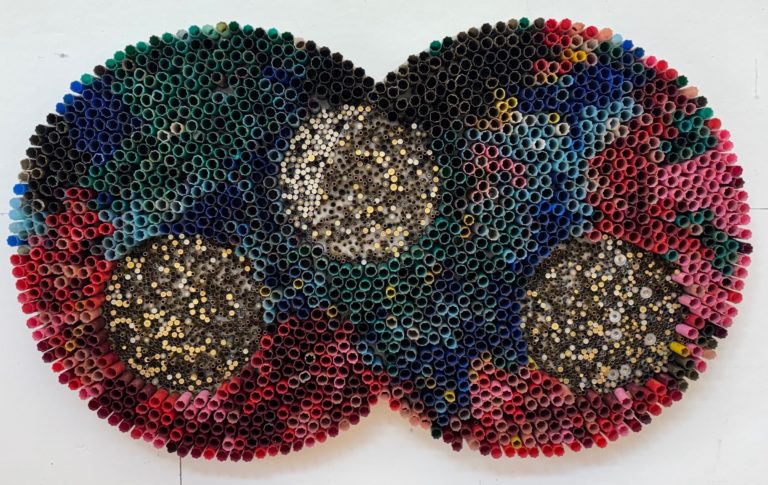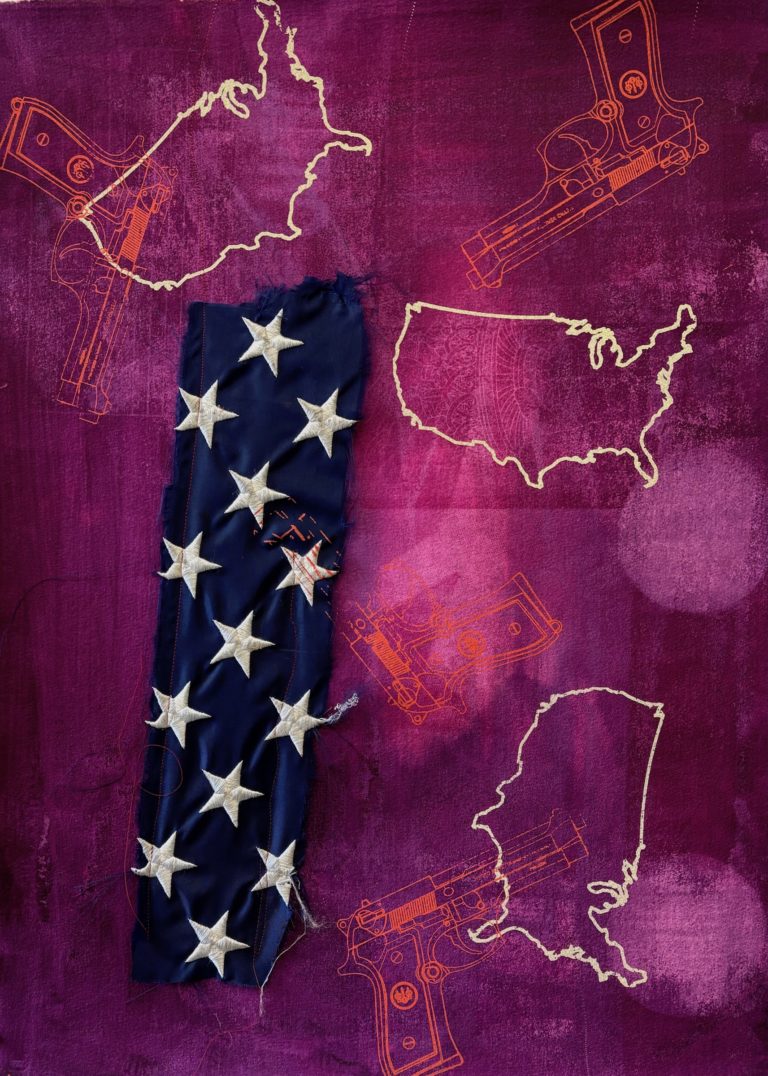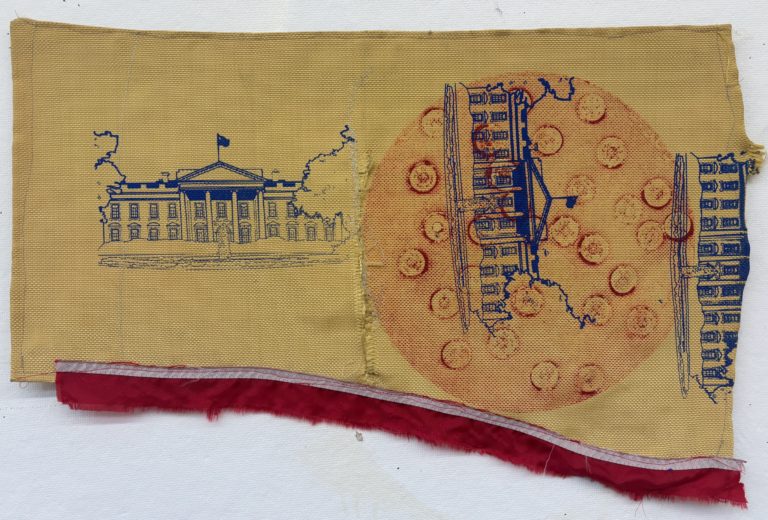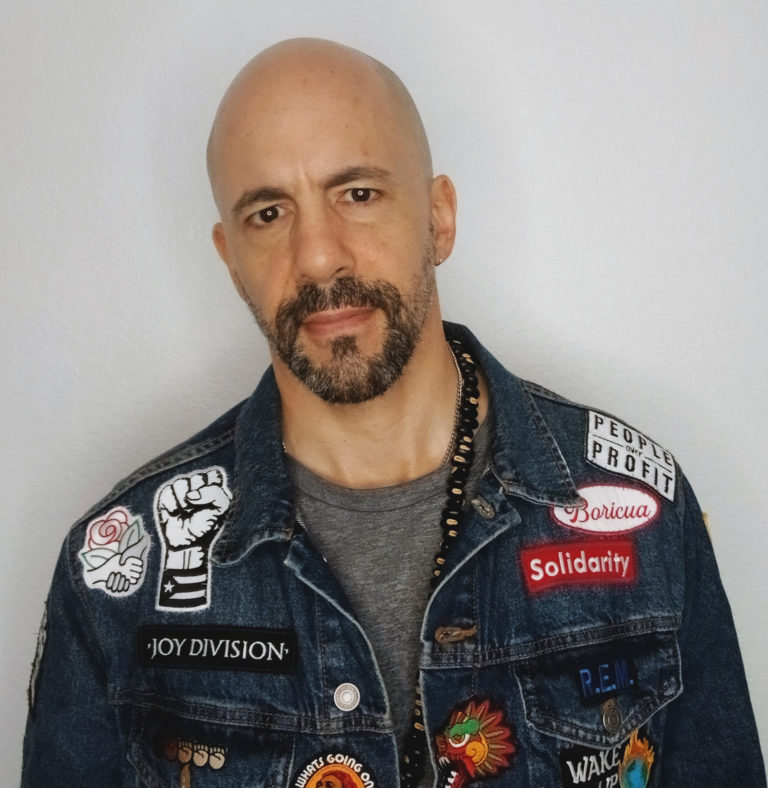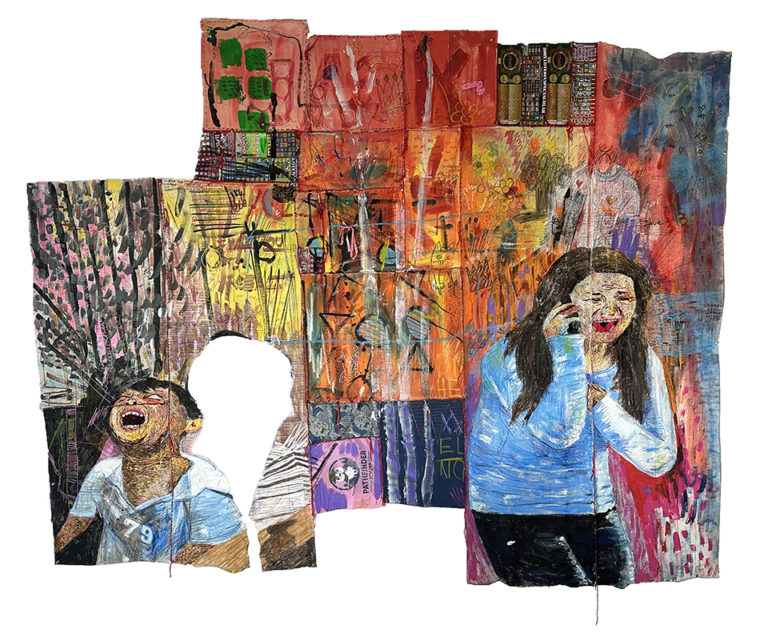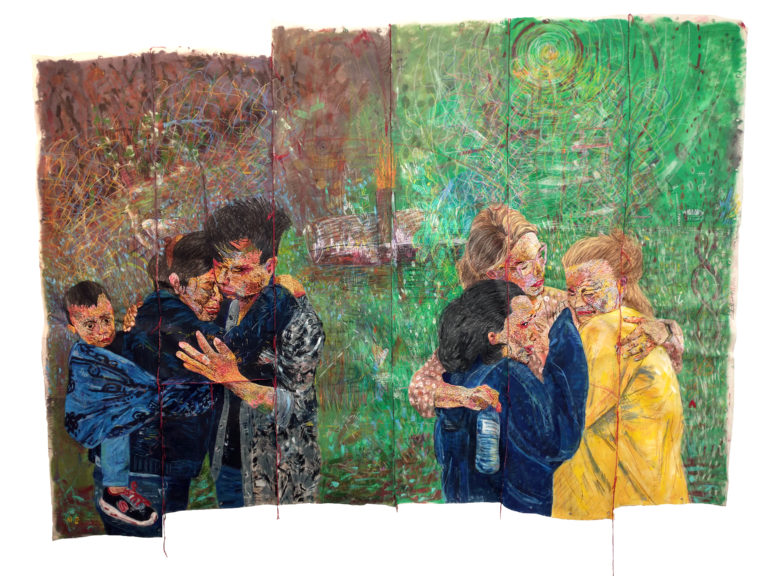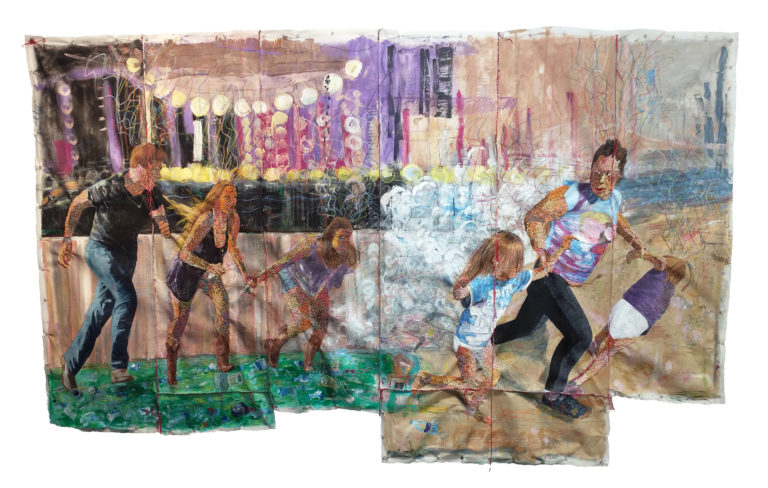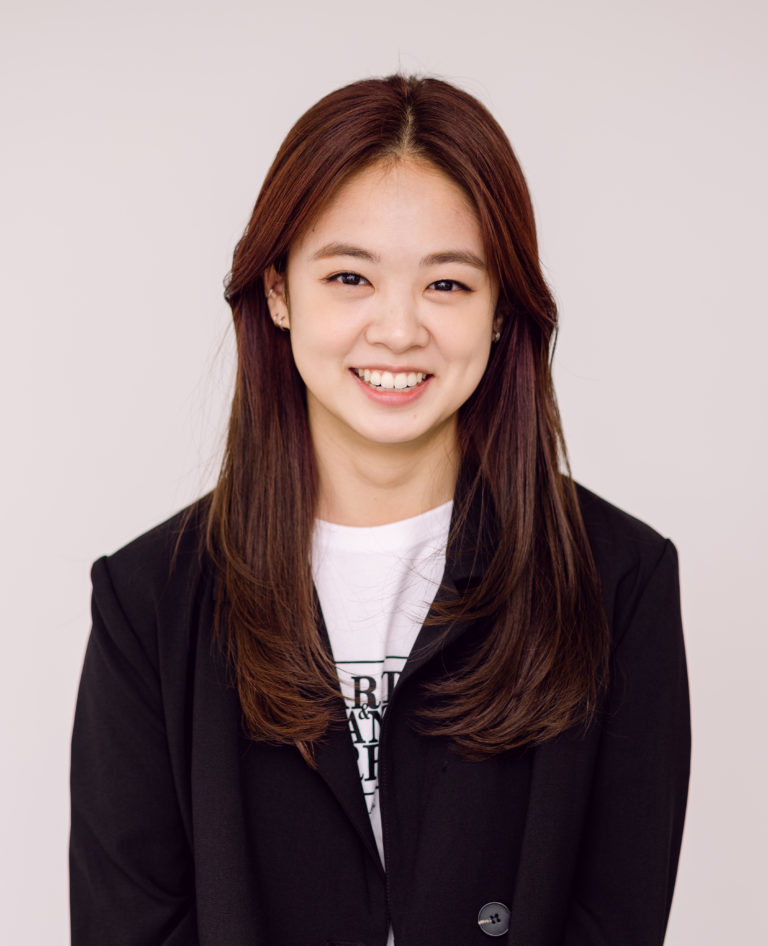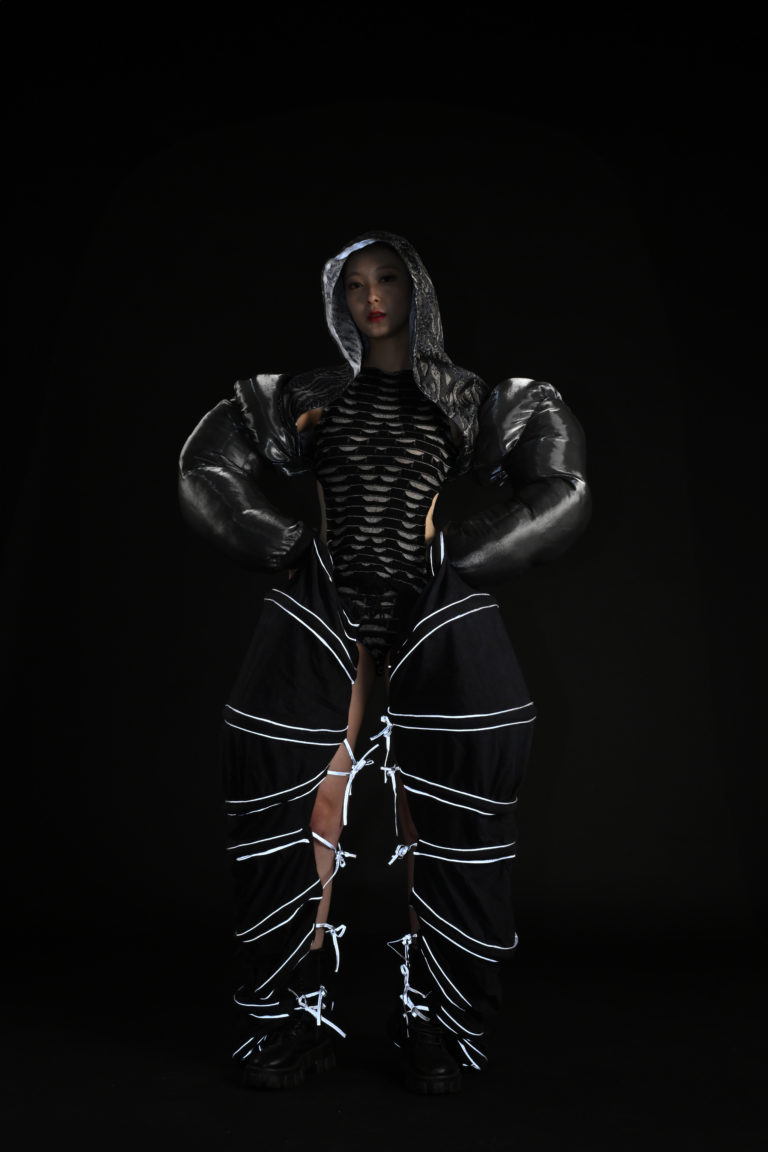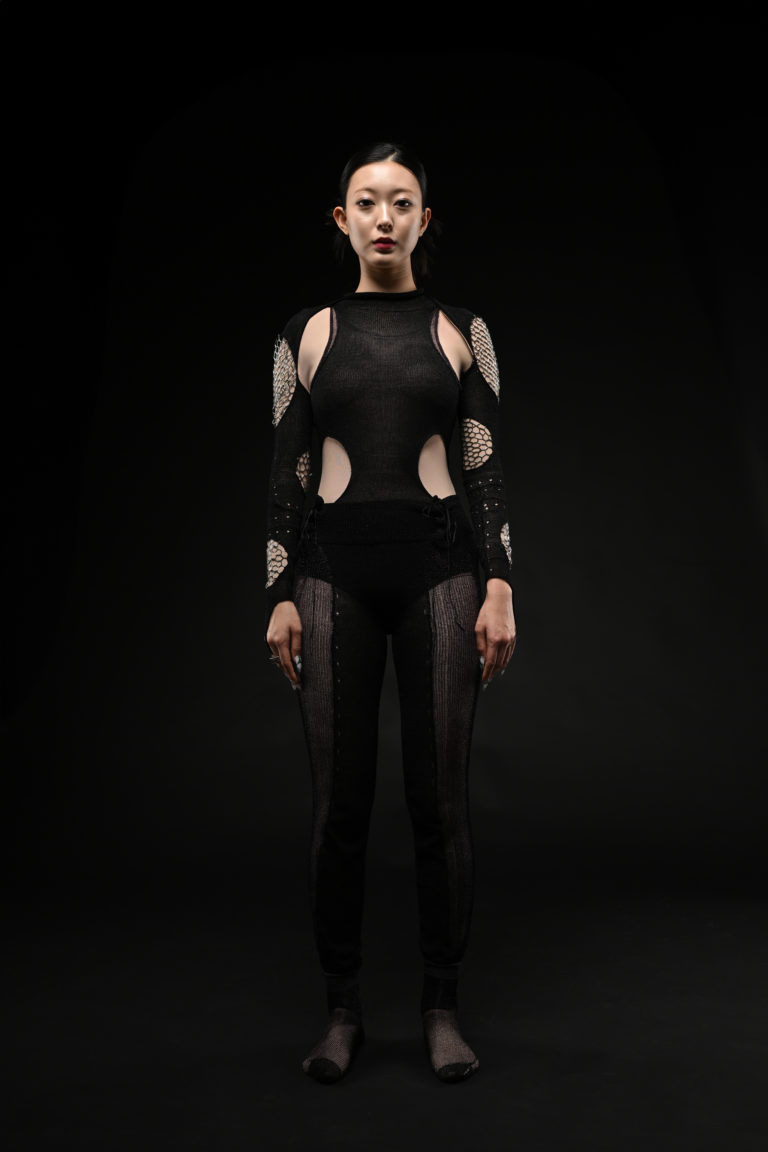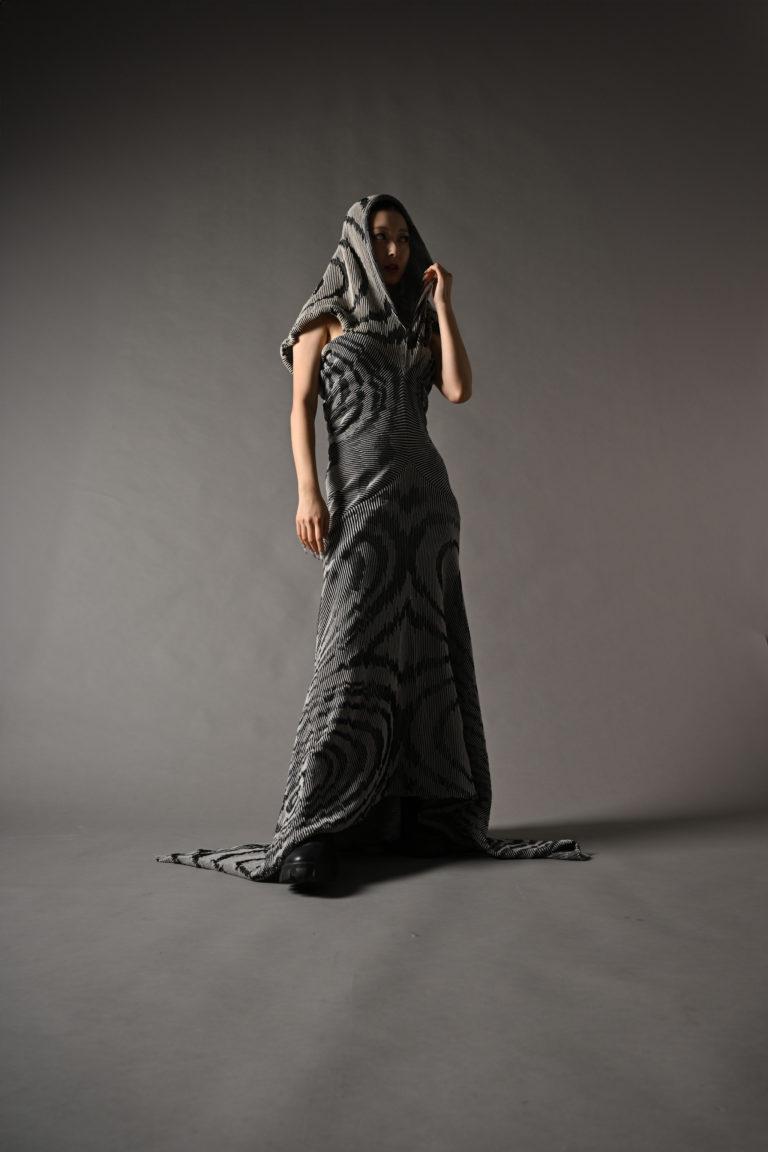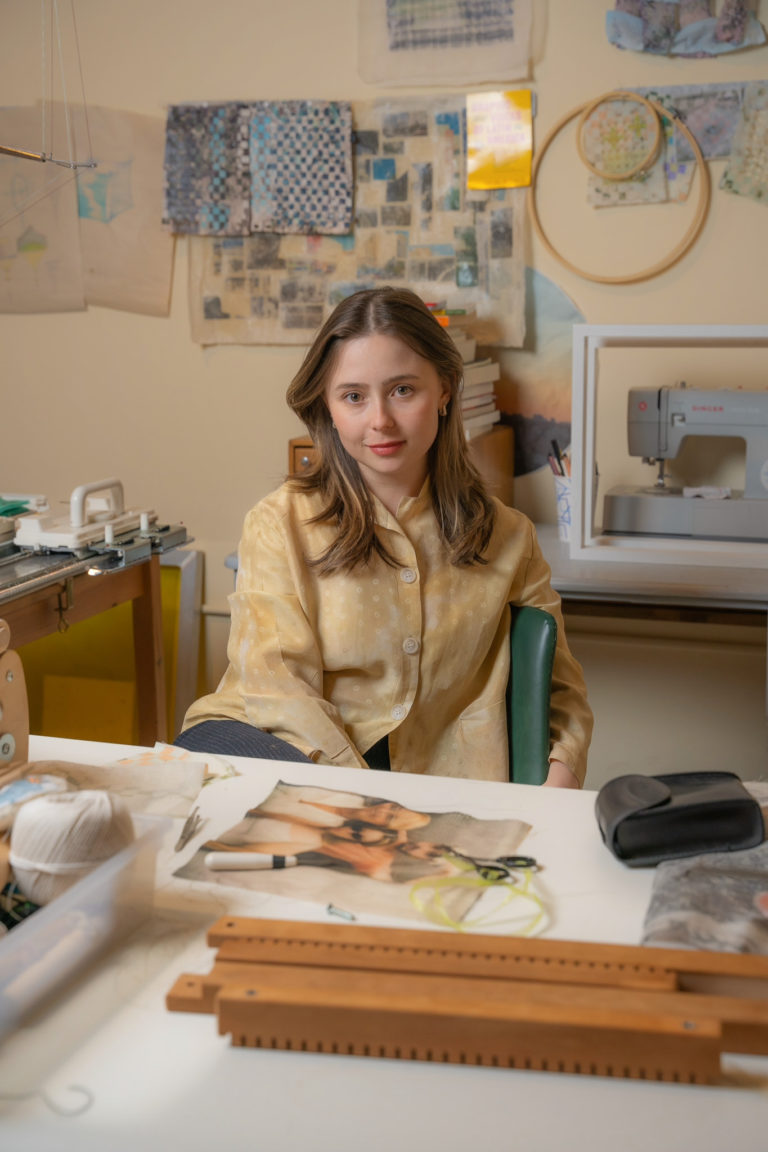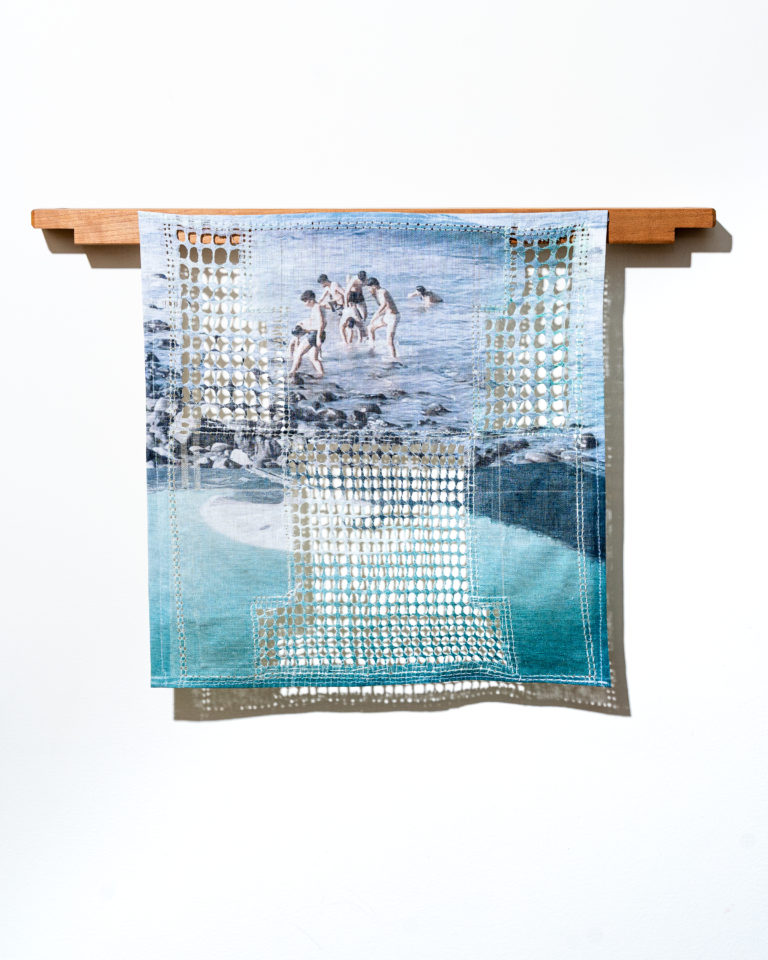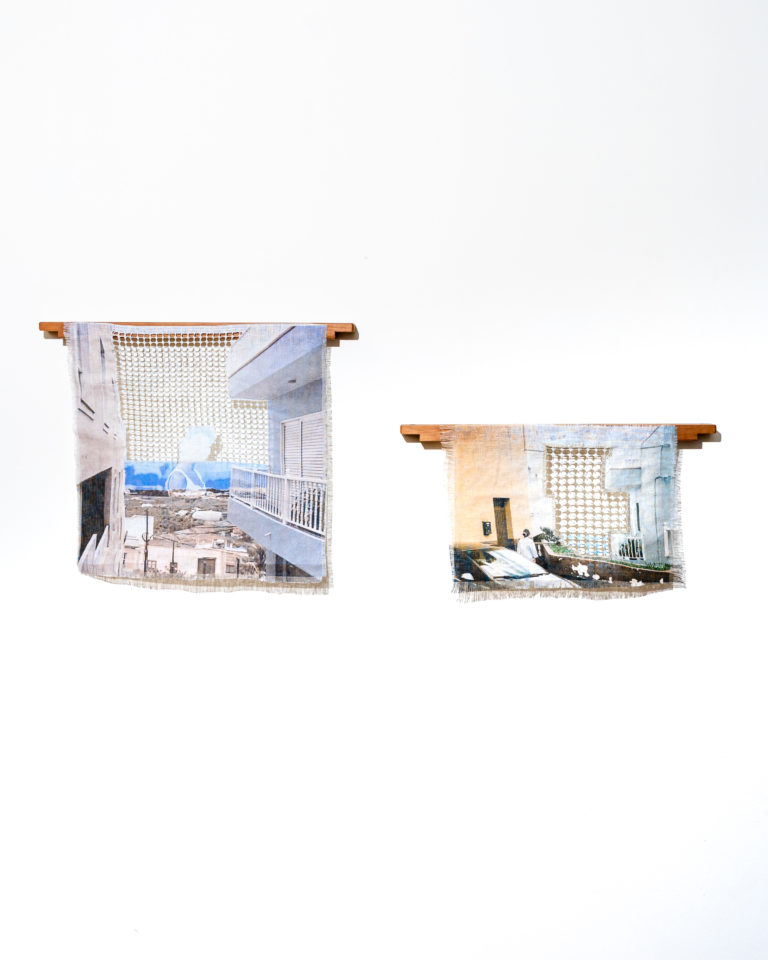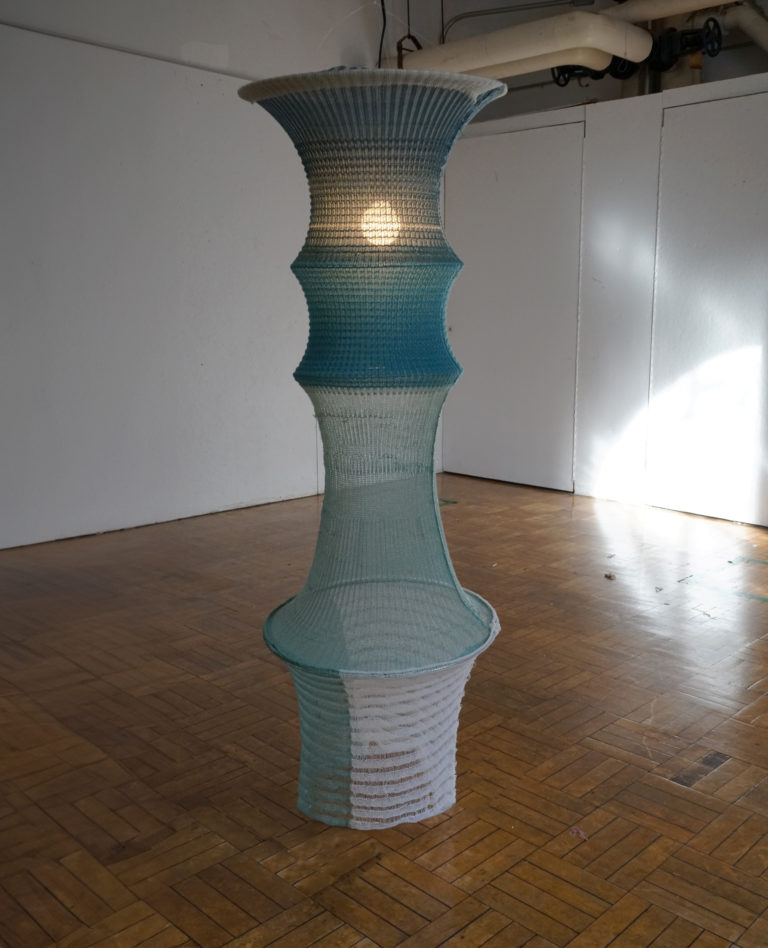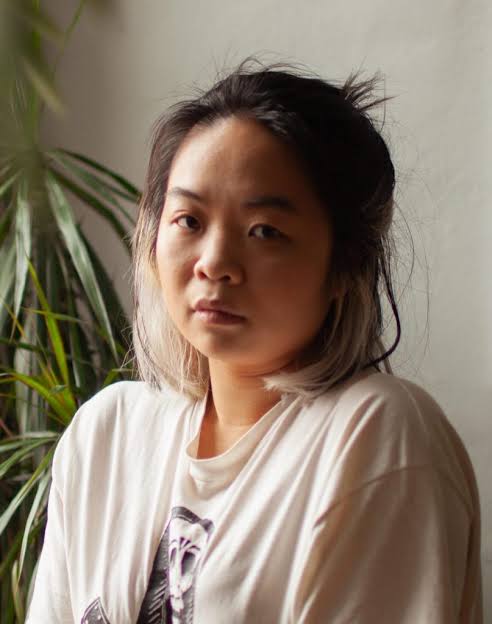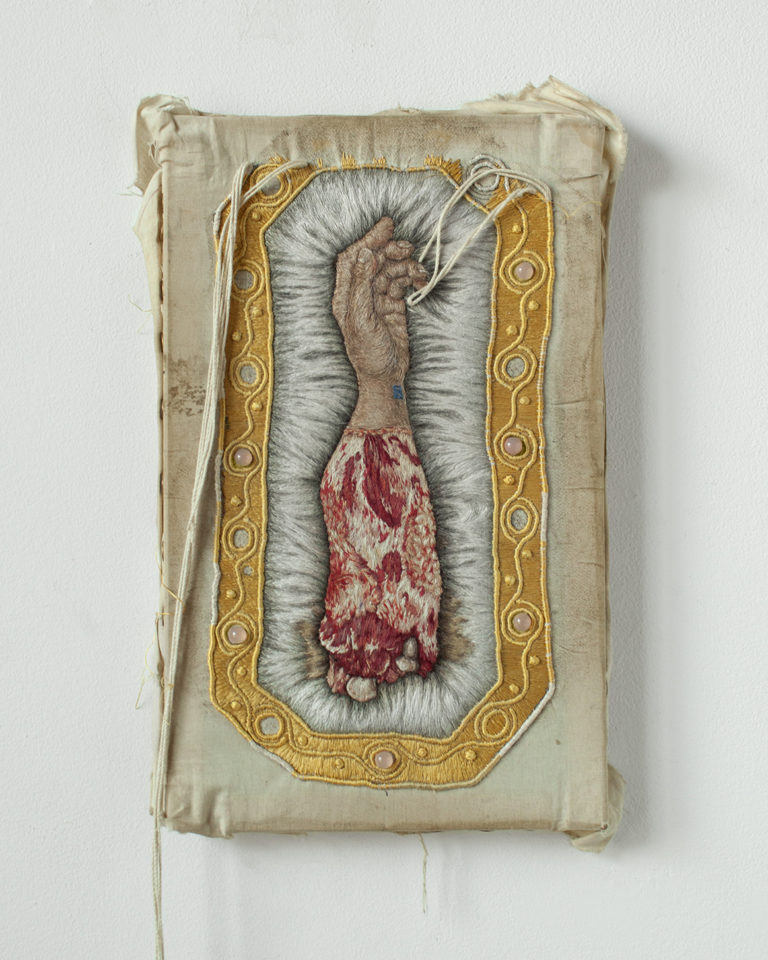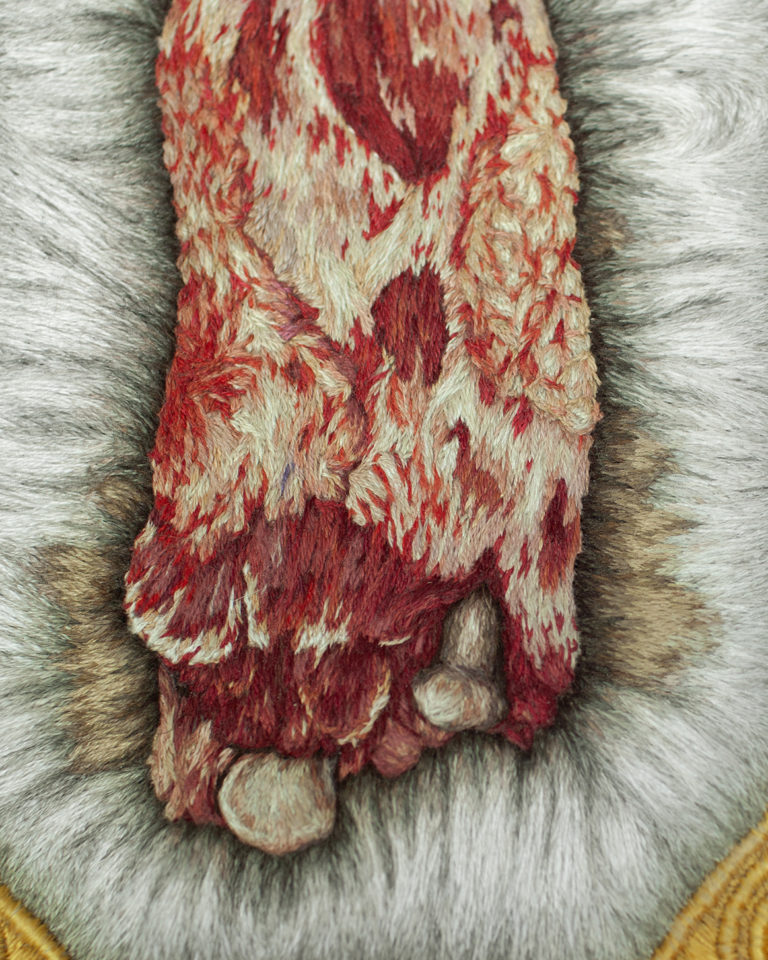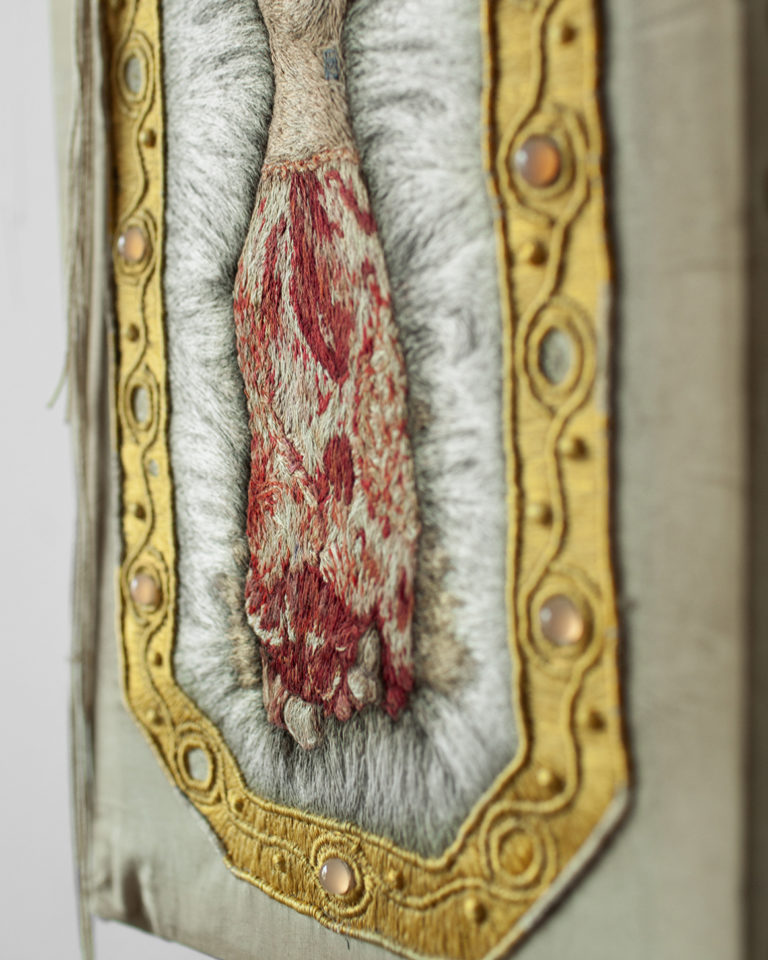Over the course of 9 months, TAC AIR residents delve into a full curriculum of technical classes, textile history and conservation and professional development. Ongoing critical dialogue, allows residents to gain a greater awareness of their practices and contextualize their work within contemporary and historical textile art.
October–December: Play
The first 3 months are a time for play and exploration, learning new techniques and getting acquainted with a studio practice in TAC’s studio. Curriculum will include technical development workshops, such as weaving, machine knitting, natural dyeing, screen printing and felting. These workshops are designed to expose residents to a variety of materials and serve as an introduction to the TAC studio.
January–March: Research & Concept
Starting the New Year, residents dive into research and development of their final project for the exhibition. Curriculum will include seminars in textile history, conservation, and contemporary craft theory. At the end of this period, residents are expected to present a project proposal that they will develop for the final exhibition.
April–June: Project Creation
The last portion of the program is dedicated to project creation and professional development. Seminars are based in writing workshops, grant writing, art law, and material sourcing. Each cycle culminates in a formal critique in June, where it is expected that residents present matured concepts and work for the final exhibition.
Classes, critiques and mentorship are facilitated by some of today’s leading textile artists, designers, curators and arts administrators. A sampling of guest critics, lecturers and mentors include:
Annie Coggan, Annie Larson, Amy Lee Sanford, Baseera Kahn, Catherine Telford-Keogh, Carlos Motta, Carolyn Sickles, Carmen Argote, Carmen Hermo, Carin Kuoni, Chi Nguyen, Dexter Wimberly, Doug Johnston, Elana Herzog, Elena Phipps, Elissa Auther, Erin M Riley, Esperanza Cortes, Gina Gregorio, Golnar Adili, Hannah Schultz, Indira Allegra, Jonathan Square, John Paul Morabito, Kaelyn Garcia, Kiva Motnyk, Laura Anderson Barbata, Lisa Vinebaum, Liz Collins, Lucia Cuba, Magali An Berthon, Mary Ping, Melissa Dadourian, Misha Kahn, Natalia Nakazawa, Nina Katchadourian, Pascale Gatzen, Rhonda Khalifeh, Sara Jimenez, Sarah Scaturro, Sarah Zapata, Sabrina Gschwandtner, Sarah Byrd, Samantha Bittman, Serena Qiu, Shannon Stratton, Tara St. James, Urmila Mohan, Victoria Manganiello, Youmna Chlala, Yto Barrada.
Studio Facilities
- 24/7 access to personal 7’ x 5’, well-lit space. Each space has 3 walls with one open, including shelving, as well as a “tack” wall.
- 24/7 access to TAC studio and equipment including floor looms; home sewing machines and sergers; knitting machines; drying rack; utility sink; dye lab for natural and synthetic dyes; dryer; steamer; screen printing facilities which include 3 yardage tables, exposure unit and washout booth
Additional Benefits
- Access to resources and fiber arts community
- Exposure through TAC marketing and social media
- $1,000 worth of free classes at Textile Arts Center during the residency
- Lifetime access to open studio + 30% of of all TAC classes
Tuition
The tuition of Textile Arts Center’s Artist in Residence Program is $11,000 per resident, split into the following payment plans:
$1200 upon acceptance (due June 2025)
$9800 due on the first week of October 2025
OR
$1200 upon acceptance (due June 2025)
$2200 due on the first week of October 2025
$760 monthly from October 15, 2025 through July 15, 2026 (10 payments)
Scholarship
The Textile Arts Center is committed to fostering diversity, equity, and inclusion in all its programs. The TAC Artist In Residence Scholarship Fund will support one artist or designer who identifies as part of a historically marginalized identity or community in the Arts, (i.e class, race, ethnicity, religion, gender, disability, sexuality, age, education) and state the need for financial assistance to participate in the program and advance their artistic practice. Applications for the scholarship are submitted along with the program application.
TAC AIR Scholarship is made possible by TAC.
Eligibility
We are looking for artists and designers at all career stages, working in textile/fiber media or looking to explore and develop a new body of work in this medium. Eligible applicants must be 21+ years old and should be proficient in English and have good communication skills. We encourage international artists to apply, but applicants are responsible for all necessary VISA arrangements and fees.
Application
All applications must be submitted digitally through Slideroom by February 28, 2025
BIPOC candidates can contact [email protected] to waive the application fee.
Selection Process
The selection process is led by a committee of Textile Arts Center’s staff, as well as professionals working in different fields of textile arts.
Selection criteria include:
- Quality of work
- Clear plan on work to be created during time of residence
- Desire to work within a diverse community
Selected applicants will be asked to come in for an interview.
Application Calendar
Application Dates for Cycle 17:
December 16, 2024 – February 01, 2025
Interviews:
April 2024
Notification of Acceptance:
Beginning of May 2024
Next Cycle Dates:
Cycle 17: October 2025 – June 2026
What is the TAC AIR application process?
Applications for Cycle 17 of AIR open on December 16, 2024. All applications must be submitted electronically through the online platform by the deadline, February 01, 2025.
You will need to write about your work, interests and experience, and —most importantly—your desire for participating in the program. Additionally, you’ll be required to submit a portfolio of 5-10 high-resolution images of your best work that most relates to what you hope to accomplish during the program.
If you experience any issues with the online application platform, please contact [email protected] by March 14 in order to answer your questions in time.
Is there an application fee?
For AIR Cycle 17, there is an application fee of $25 for applications submitted by January 31, 2025; and a fee of $35 for applications submitted by February 28, 2025.
Is this an in-person program?
Yes, the AIR program is an in-person residency.
Most of the classes and critiques of the program are in person. Residents meet on Mondays and Thursdays, from 6:30pm to 9:30pm. Additionally, if accepted, you will commit to working 15-20 hours a week in the studio developing your practice, so we recommend you live within commuting distance during the residency period.
Do you accept international applicants?
We have had several international artists move to NYC for the duration of the program. TAC can offer some guidance and support for your VISA application, but residents are responsible for all VISA arrangements and fees. Reach out to International Arts and Artists for guidance.
Is there any degree requirement to apply?
There is no degree requirement to apply to TAC AIR and we encourage applicants from all backgrounds.
What’s the selection process?
All applications will be reviewed by a jury committee made of TAC staff, and professionals working in different fields of fiber arts. After the first round, selected applicants will be contacted for an interview. Interviews will be held during the month of April. Candidates will be contacted by the end of May with their acceptance status.
What are interviews like? Who conducts them?
Interviews are typically about 30-40 minutes, and are conducted by Kelly Valletta, TAC Executive Director, and Romina Schulz, Artist Programs Manager. Applicants should be ready to discuss their work, their reasons for wanting to participate in the program, and what they hope to accomplish creatively and professionally.
What if I am not in NY and get invited for an interview?
We strongly prefer that candidates be able to have an in-person interview, but definitely understand that this is not always possible. In these cases, we will schedule a video call interview.
If I’m accepted for TAC AIR, what is needed upon acceptance?
Accepted applicants must notify TAC within one week of acceptance to be part of TAC AIR. At this time, you will be required to sign the AIR Contract and submit a tuition deposit of $1200.
Are there any financial aid options available?
The Textile Arts Center is committed to fostering diversity, equity, and inclusion in all its programs. The TAC Artist In Residence Scholarship Fund will support one artist or designer who identifies as part of a historically marginalized identity or community in the Arts, (i.e class, race, ethnicity, religion, gender, disability, sexuality, age, education) and state the need for financial assistance to participate in the program and advance their artistic practice. Applications for the scholarship are submitted along with the program application.
Since only one artist per cycle will receive the Residence Scholarship, we encourage applicants to begin researching third-party funding by the time of application, including artist grants, loans, credit, or others.
Here is a brief list of some places to look for grants and resources:
If you are an international applicant we advise you to look for opportunities in your home country as well as the US. Additionally, we encourage and support residents to organize their own crowdfunding campaigns.
What kind of time commitment is the AIR program?
This is a self-driven residency. We expect that residents spend about 15-20 hours per week in their studio on their work. Critiques and class times are twice per week, generally totaling to about 6 hours additional per week. Residents have 24/7 access to the TAC studio.
We expect that accepted residents make the program a priority for the full cycle. It is an intensive professional development program that will take a lot of focus, work, and time. We believe the investment in you and your work makes it worth this level of effort and attention.
What is life in the studio like?
TAC is a buzzing community atmosphere and an inter-generational collaborative environment. TAC AIR studios are fully integrated with year round artist studios, a gallery, adult classes, youth programs, birthday parties, and various events throughout the year.
The artists’ studios are located in the project space, side-by-side open public studios. Each studio consists of three walls, with one side open to the shared area. The studio is a hub of activity, with lots of things happening. Weekends tend to be busier, while weekday mornings and late nights tend to be quieter.
What is it like living in NYC?
The multicultural city of New York City is home to an active art community and a wide range of exhibitions and cultural events.
It is an expensive city to live in, so budgeting is important. TAC accepts candidates that have full or part time jobs. We want this program to work for artists and designers as a complement to their lives.
Have a question for an AIR alum about their experience?
Here’s a few you should feel free to contact:
If you still have questions, feel free to email Artist Programs Manager.
